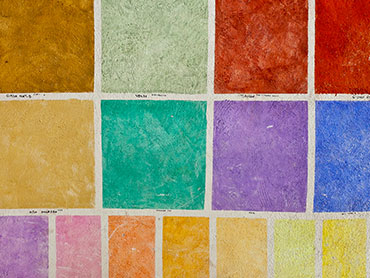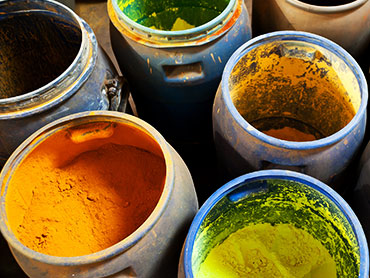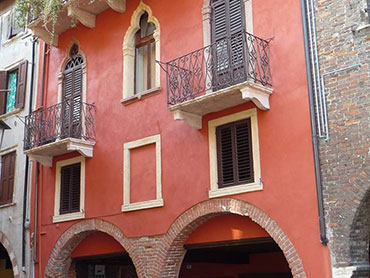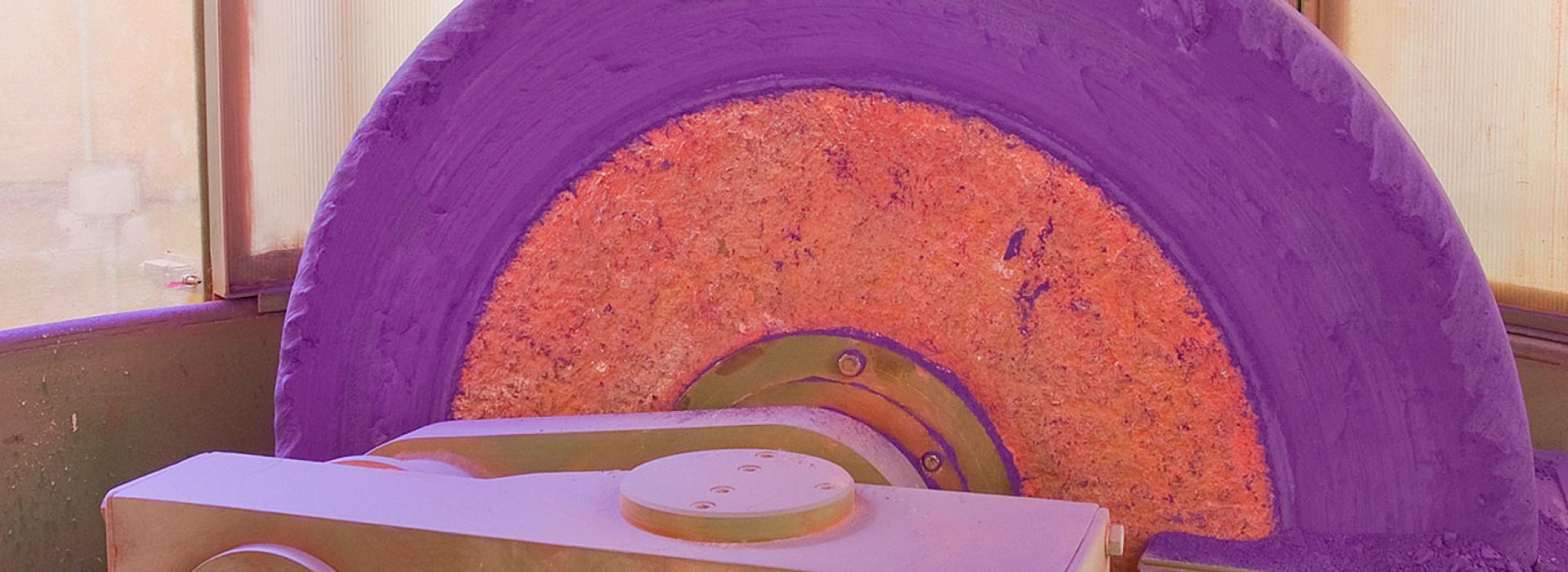
Manufacture and processing of coloring earths
important in the scope of art and restoration
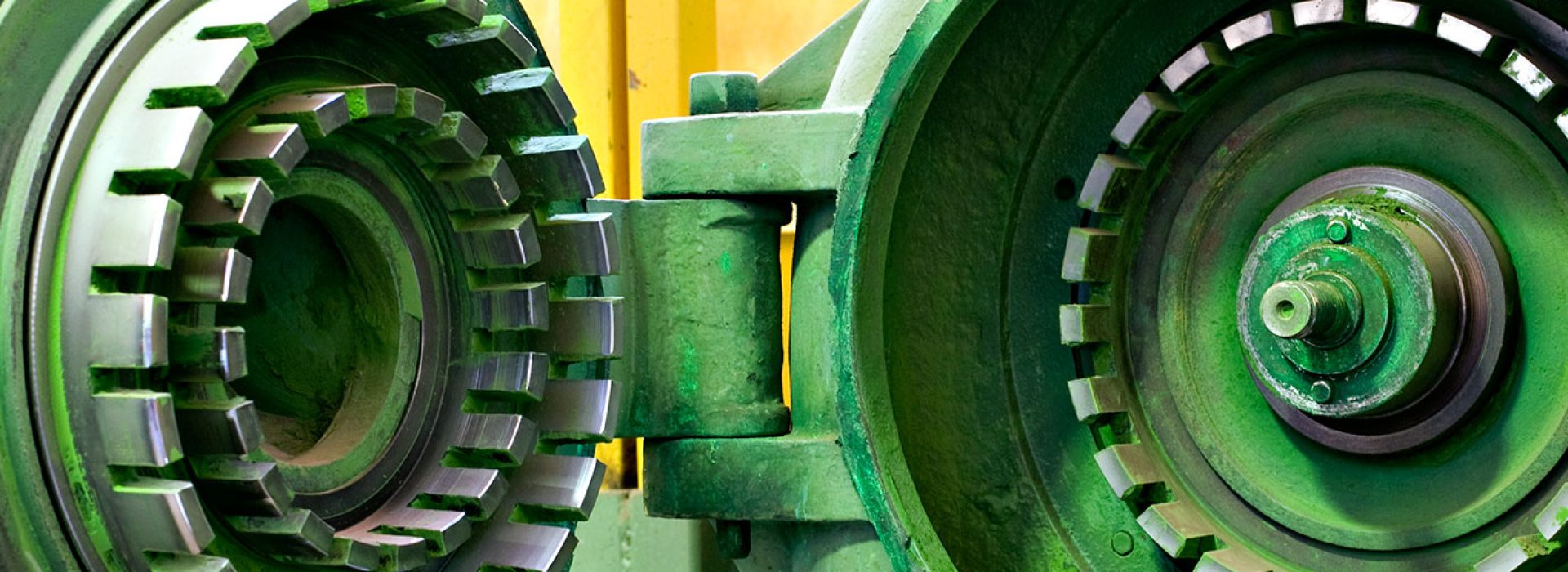
QUALITY, TRADITION, SERIOUSNESS FROM 1910
Natural earths:
quarryng and working
We define colouring earths those earthy and fine pigments we can find in nature and use as colouring substances.
Natural ultramarine (lapislazuli) and cinnabar, mineral pigments that were exclusively used in valuable works of art, are usually not considered colouring earths.
Most of colouring earths contain an iron compound: an oxide, a hydroxide, a hydroxide silicate. Black earths are the only not-iron-base earths.
After quarrying and drying, each colouring earth needs a different working process; some of them are coarsely crushed, they are got rid of impurities and they are mulled by hammer or ball mills.
Other earths are burnt, therefore they mineralogically change in a way, that permits us to obtain many tones.
Then each batch is controlled using a scanning spectrophotometer and compared with a standard.
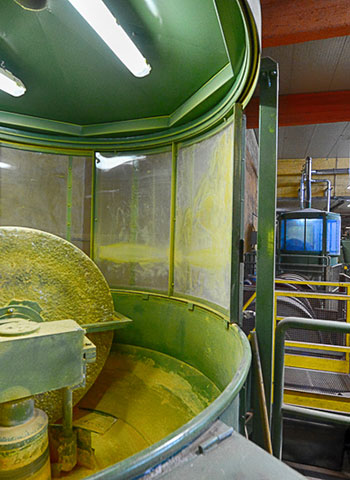
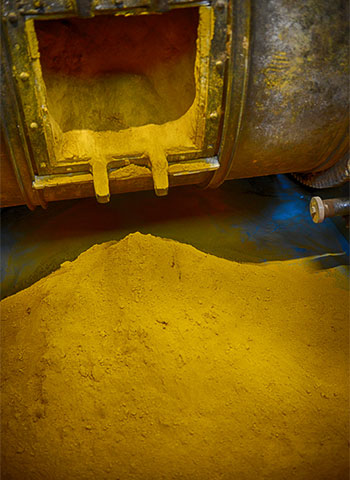
has been used since roman times
Yellow earths
Yellow earths are iron hydroxides (limonite) associated with clays. The content of iron can vary between 15-20% and 60-70%.
Yellow earth of Verona has been used since roman times. They used to calcine it to get a fiery red colour.
Yellow earth deposits are in Karst hollows, which formed in middle Eocene times in the hills near Verona (Torricelle), as a result of rock dissolution, caused by water.
There are other quarrying sites near Verona: Valpantena, Illasi valley, etc..
Sienna earths have been used since last century.
The deposits are in Mount Amiata; they were probably created by volcanism. In ancient times the mount was a volcano, which formed some lake basins, where iron-hydroxide clays sedimented.
the mineralogical variety of this oxide is hematite
Red earths
Their red colour is due to the presence of red oxide associated with amorphous clays and silicates; the mineralogical variety of this oxide is hematite.
It is obtainable also by yellow earth calcination at a temperature between 200° and 400°.
You can find very high quality red earth in basaltic canals in Verona, too.
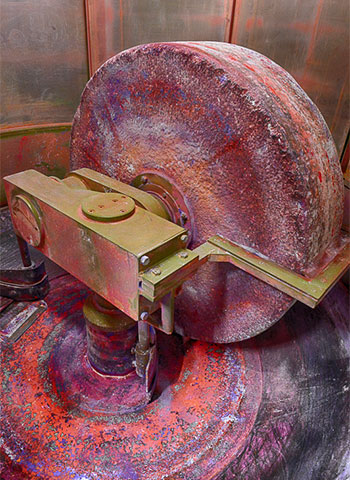
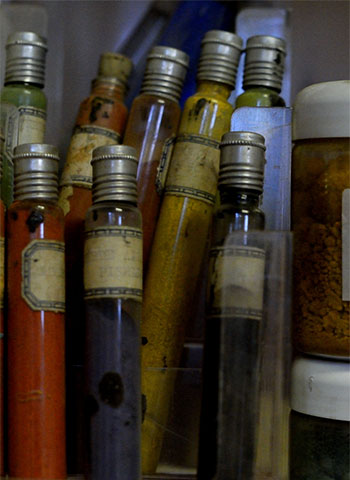
Cyprus umbers
Umbers
The colour of umbers is principally due to the presence of manganese and iron oxides in a clayey basis.
Manganese oxide offers very soft earthy varieties, such as pyrolusite (MnO2) and hausmanite (Mn3O2).
Darker shades are obtainable by calcination.
Cyprus umbers have always been considered the best available.
The MnO2 content is very high, so the pigment has a dark shade; after burning, it changes from greenish brown into dark brown.
Their origin is still debatable
Green earths
The colour is principally due to hydroxide silicates (iron, magnesium, alkali). Among these, glauconite is spread in clays.
Their origin is still debatable. They were supposedly formed by mineral alterations in not very deep waters (green earth of Nice).
Green earth of Brentonico was formed by volcanic rock alterations. Green earth of Prun lies in basaltic canals in S. Cristina (Verona).
Green earth of Cyprus is not available anymore, because it lies in a Turkish zone.
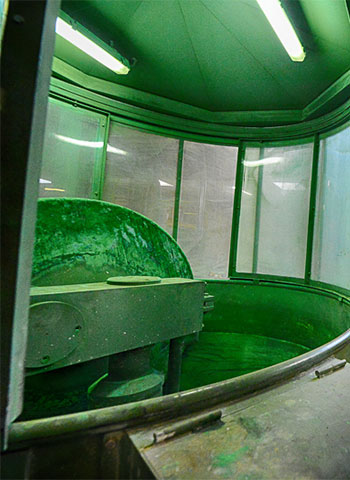
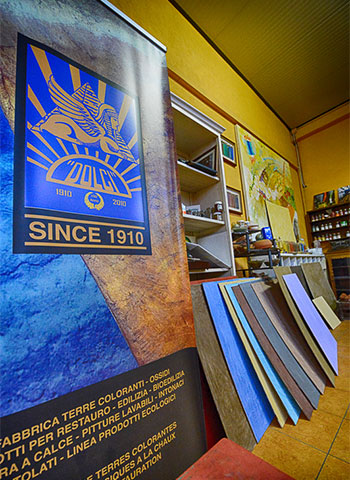
easy dispersion in water
Black earths
Black earths were much used in the past for wall colouring, because of their easy dispersion in water.
Black earth of Verona is constituted by a very clayey carbon schist, that is almost a paste when it’s near a basaltic mass.
grant solidy to paint
Organic binders
Organic binders have always been of great importance in wall colouring and fresco. They contribute to carbonation, and so they grant solidity to paint, both on wet and dry plaster.
We can divide binders into two categories: natural binders and synthetic binders.
Natural binders are:
- Temperas: they include materials both of animal and vegetable origin: proteins (of animal origin), animal glues; egg, milk, casein.
- Protein temperas: they contain proteins, polymers formed by amino acids of animal cells.
- Glues and gelatines: they are made by cooking animal tissues (ovine, cattle, rabbits). They solubilise in cold water; they swell and then melt in lukewarm water. They form water-resistant painting films (though assailable by micro-organisms)
- Egg: both albumen (proteins) and yolk (fats) are used; they form strong and elastic films.
- Milk and casein: milk is a natural watery emulsion consisting of proteins and fats; casein is particularly interesting, it is not soluble in water, but in basic environment (ammonia) and in slaked lime.
- Carbohydrates: the most commonly used sugary substances are gum Arabic and tragacanth. They are water-soluble.
- Oils: they are of vegetable origin, they form strong and elastic films; linseed oil is greatly drying. Substances like lead, cobalt, manganese have always been used to accelerate drying-process.
- Waxes: wax has been used since roman times as a protecting substance. Fields of use
Natural earth colours can be used for many painting techniques, such as:
- Fresco: colouring earths are thinned out in lime-water and spread on wet lime plastering.
- Encaustic: this technique use hot-spread colours with wax binders.
They are used in the building field for lime painting of fronts, particularly in historical centres on ancient buildings; they are especially used for lime spatolato, because of their inimitable shades in marble surfacing, furniture varnishing, etc.
They have an excellent resistance to chemical agents, light, lime and humidity.

